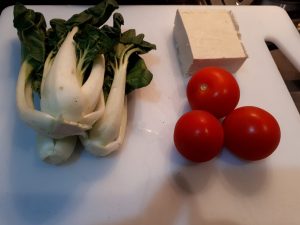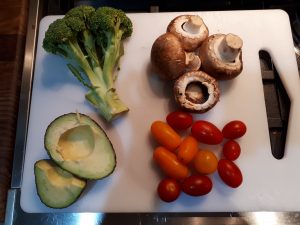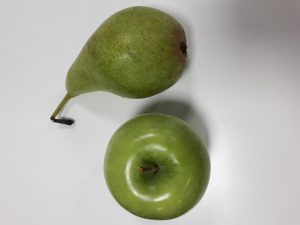Posted on August 30, 2018 by Kate Halsall
Everyone seems to be using apps to record every morsel of food these days! It’s also definitely become more popular to pay more attention to the nutritional information displayed on a packet. None of these are bad things of course….unless it’s not recorded correctly that is. Nutritional information is predominantly displayed as per 100g – you may also get per serving if you’re lucky. My Fitness Pal also tends to default to a serving size of 100g. But what does 100g look like? The size of the portion may surprise you.
Picture 1

So left to right:
- 100g Pok Choy – it’s about one bulb
- 100g Tofu – 1/4 block of Tofu – hardly anything!
- 3 whole Tomatoes (small ones at that) = 100g
Pictures can be misleading. It looks like the tomatoes are big – they are not! It also looks like a decent amount of pok choy – I’m not sure it would fill me up!
Picture 2

- 100g Broccoli – this is less than half of head of broccolli
- 1 and a bit of the smallest Avocado I have ever seen
- 100g of Mushrooms = 4
- A good handful of plum/cherry Tomatoes
Whilst things might be looking up, I’m not sure we have a full meal yet!
What it doesn’t look like
This Apple is 160g and the Pear is 174g

Why is this important?
If you’re tracking your food for weight loss or weight gain, it needs to be accurate! If you’re selecting 100g from the drop down and having bigger portions than these pictures – then you’re not logging it accurately at all! That would mean more calories, more macro-nutrients, basically more stuff that you’re not accounting for.
Featured image from https://pixabay.com/en/diet-nutrition-horizontal-1135819/

